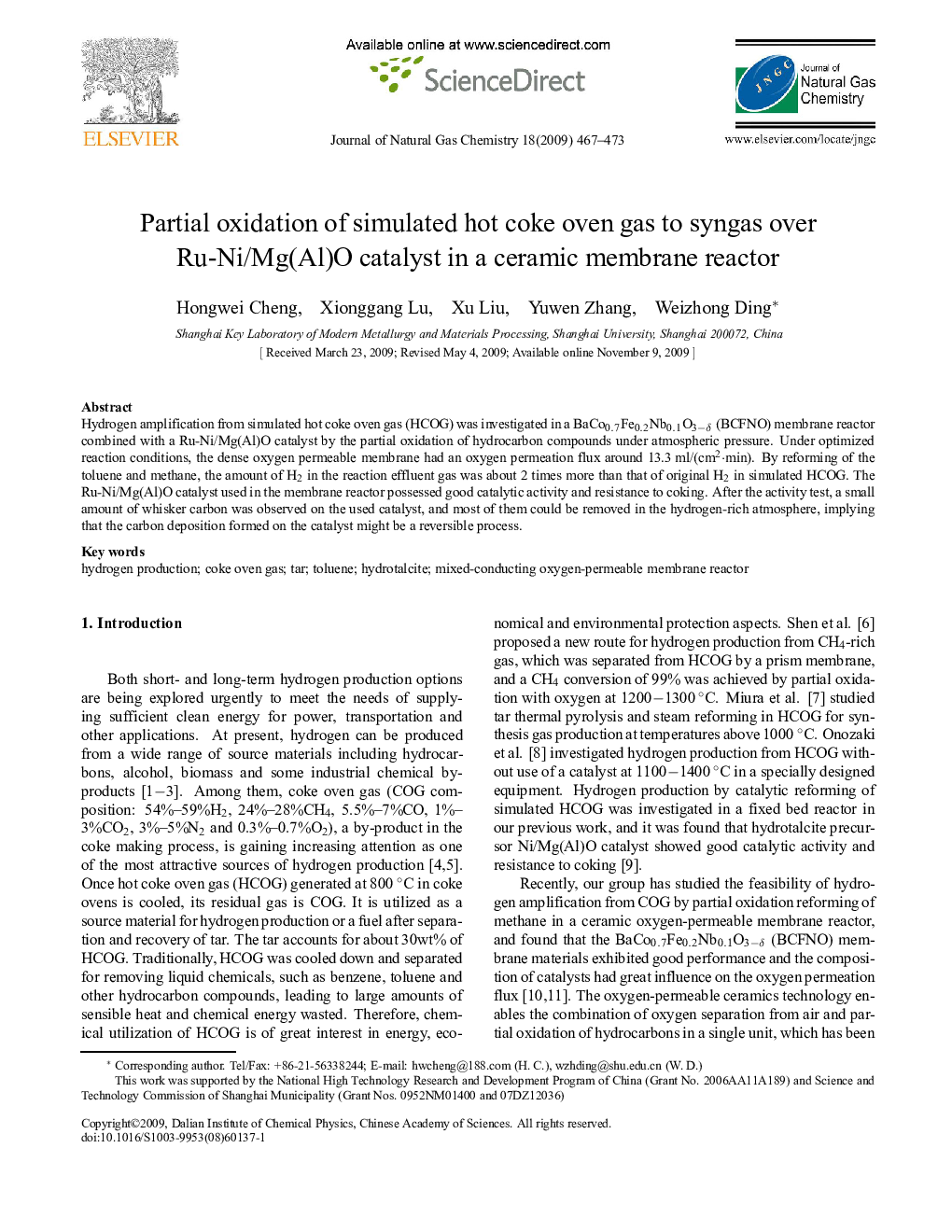| Article ID | Journal | Published Year | Pages | File Type |
|---|---|---|---|---|
| 71719 | Journal of Natural Gas Chemistry | 2009 | 7 Pages |
Hydrogen amplification from simulated hot coke oven gas (HCOG) was investigated in a BaCo0.7Fe0.2Nb0.1O3-δ (BCFNO) membrane reactor combined with a Ru-Ni/Mg(Al)O catalyst by the partial oxidation of hydrocarbon compounds under atmospheric pressure. Under optimized reaction conditions, the dense oxygen permeable membrane had an oxygen permeation flux around 13.3 ml/(cm2·min). By reforming of the toluene and methane, the amount of H2 in the reaction effluent gas was about 2 times more than that of original H2 in simulated HCOG. The Ru-Ni/Mg(Al)O catalyst used in the membrane reactor possessed good catalytic activity and resistance to coking. After the activity test, a small amount of whisker carbon was observed on the used catalyst, and most of them could be removed in the hydrogen-rich atmosphere, implying that the carbon deposition formed on the catalyst might be a reversible process.
